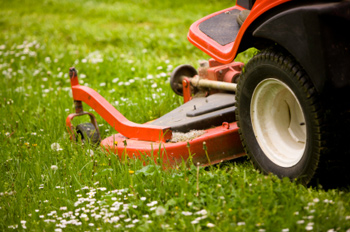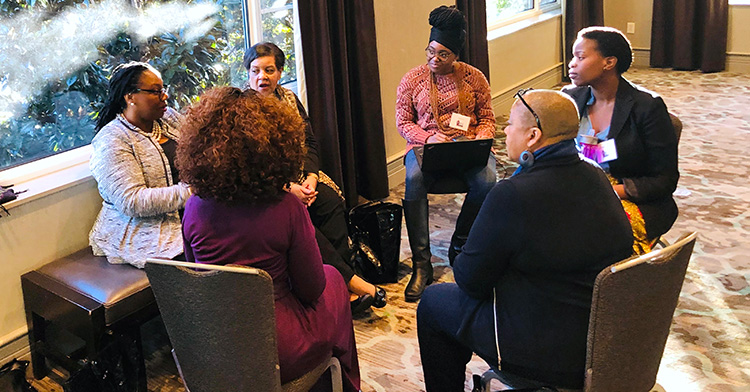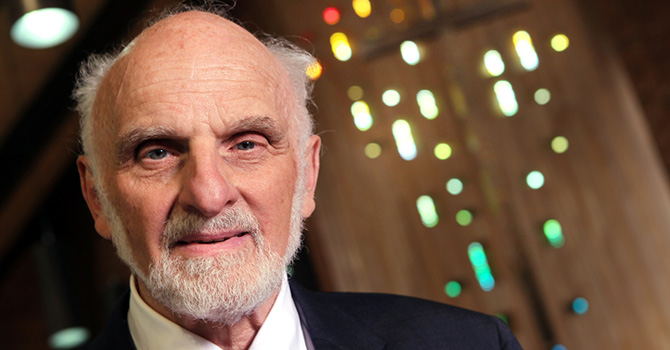There is a telephone jack on the wall by the toilet in the master bathroom in the parsonage where I live. When I first saw it, I laughed to myself and thought, “What a piece of silliness! Do these people actually expect the pastor to hold phone conversations in the bathroom?”
Then I thought that perhaps the phone jack was installed in imitation of ritzy hotels and high-end homes. Do ritzy hotels and high-end homes have phone jacks in the bathroom? I wouldn’t know.
Another piece of silliness in the parsonage didn’t strike me at first as being so silly. There is a small compartment built into the wall in the closet of the master bedroom. Jim, the parsonage committee member who showed me around the house, proudly pointed it out and told me, “This is a hidden compartment for your gun.” I must have given him an incredulous look, because he quickly added, “Or your jewelry.”
A third piece of silliness is the name of the street on which the parsonage sits: Bunny Road. At one of the first congregational covered-dish lunches I attended, I joked about the whimsical street name. Pee-Wee, a large, rough-looking farmer, set me straight: Bunny Road is named after a person, not a rabbit. “Bunny” was the nickname of the farmer who originally owned the land. “Oh,” I said, wisely refraining from commenting on silly nicknames.
Can you stand one more piece of silliness?
There is a flock of free-range guinea fowl that forages in the front yard of the parsonage. Guineas make a loud racket, something between a cluck and a screech, but I didn’t know this. The first time I heard them, I thought something was wrong with the air conditioner. I had never seen such silly-looking birds. I posted a photo of them on Facebook asking, “What are these things?” Turns out guineas are as common as chickens out here. My congregations found my ignorance to be a piece of silliness.
Questions to consider:
- What does your parsonage symbolize for your congregation(s)? Is it a gift, a benefit, an obligation?
- What does your parsonage symbolize for you? Is it a refuge, a public space, a benefit, an obligation?
- What are some elements of your best parsonage-living experiences that could inform the larger congregational system?
- What elements of your worst parsonage-living experiences could inform the congregational system?
- Would you or your congregation be happier with a housing allowance as part of a compensation package for clergy? Has the day of parsonages gone?
When my husband and I moved into the church-provided home, the parsonage committee rep, Jim, took great pleasure in showing us other features of the house -- the patterned texture on the ceiling in the formal living room, the hose attached to an interior spigot and coiled up inside a cabinet in the guest bathroom (“because if you have a fire in the parsonage, the volunteer fire department might not get here so quickly”), the water softener in the garage, a cross sculpted into an exterior capstone, the big riding lawn mower parked in the garage.
The lawn mower let me know that the pastor is expected to mow her own lawn. I have discovered I do some of my best thinking while mowing the vast expanse of grass and weeds. The only aspect of mowing that I dislike is riding smack into the large, invisible spider webs hanging between the trees. I now have a long “spider stick” that I swing between the trees before I mow, a piece of silliness not lost on my church folks.
Initially, I was struck by how nice the parsonage is for a three-point rural charge. I didn’t expect it. Pastors sometimes live in less-than-optimal circumstances, with holes in the floor, leaky roofs, moldy basements and contaminated wells. The parsonage provided by the charge to which I am appointed is lovely, well constructed and cared for. The unspoken message of this parsonage is, “The pastor is important to us.” This was both a humbling and a heartwarming realization for me.
Actually, it is somewhat amazing that this parsonage was ever built.
Ten years ago, three rural churches who are fairly convinced of their own financial poverty and who seldom agree about anything somehow came together and built this beautiful house for their pastor. Jim, the member who showed me the house, oversaw the construction of it, and he was on-site almost every day. He planted the trees himself. He watched the well being drilled and the cement for the walkway poured. He provided the gravel for the driveway, and when it snows, he plows the driveway. The parsonage committee wanted the pastor’s home to be elegant -- hence the patterned ceiling and white carpet in the formal living room, which takes up a full third of the house.
“Who was the genius who put white carpet in the living room?” I complained to Jim after about a year of holding weekly Bible study in the room. Each week, without fail, I would be on my hands and knees scrubbing red dirt off the carpet. He seemed perplexed by the question. “Well, we wanted that room to be nice,” he replied. “The pastor does important things in there.”
“Oh,” I said, smiling and feeling ashamed of my sarcasm.
In the back yard of the parsonage, there is a deck offering excellent nighttime star gazing, and I enjoy watching thunderstorms from the front porch, a quirk noticed by members of the churches, some of whom live on Bunny Road. It seems to please them. They smile when they mention seeing me sitting on the porch when it’s raining or mowing when the sun is shining -- or swinging a “spider stick” between the trees.
Members noticed last spring when I manually hoed the front flower bed before planting a mass of marigolds and zinnias. One of the members offered to provide a tiller. I declined, enjoying the therapeutic value of smacking the red clay with a hoe. The bed was overrun with nandinas -- shaggy, red-berried bushes that can become invasive. “The kingdom of God is like a nandina bush,” I thought, as I hacked away at one of them.
Jim passed by at that moment and leaped from his car. “What are you doing?!” he said. He must have planted the nandinas, I thought, with a sinking feeling. Jim and I spent a half-hour talking about flower beds. I pointed out the problem with the nandinas, as well as the zillion dandelions that had turned the front yard into a mass of yellow flowers, stems and floating seeds.
When Jim left, not only was he OK with the slaughter of the nandinas, but he returned the next week to broadcast weedkiller on the lawn.
This parsonage provides a lovely and comfortable place for the pastor and his or her family to live in the community where we serve. But more than that, it continually reminds me that the pastor’s role among the people of God is important. What we do and say might be silly or serious, but it gets noticed, and it matters, whether we are preaching, teaching, mowing or hoeing.














